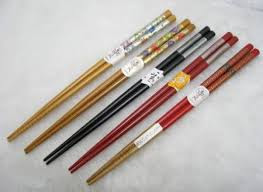Introduction
In China, chopsticks are an indispensable dining tool, accompanying people throughout their lives. Beyond their practical function, chopsticks carry profound cultural significance and philosophical wisdom. This article explores the intricate details of chopstick culture, including their production standards, symbolic meanings, and philosophical foundations.
The History of Chopsticks
The origin of chopsticks dates back to ancient China, where they were initially used for cooking and serving food. Over time, their purpose expanded to dining, evolving into essential utensils for daily meals. Their simplicity and practicality make them perfectly suited to China’s diverse culinary traditions.
Cultural Significance of Chopsticks
Length: A Symbol of Human Experience
A notable feature of chopsticks is their standardized length of 7.6 inches. This precise measurement holds deep symbolic meaning in Chinese culture. The length embodies the "Seven Emotions" and "Six Desires."
The "Seven Emotions" represent a spectrum of human emotional experiences, as described in various cultural and philosophical contexts: joy, anger, sorrow, fear, love, hatred, and desire. These emotions reflect the complexity and depth of the human psyche.
The "Six Desires" signify fundamental human cravings tied to life, death, hearing, sight, taste, and touch. These desires encapsulate sensory experiences and our yearning for diverse sensations.
By encapsulating the "Seven Emotions and Six Desires," the length of chopsticks serves as a metaphorical representation of the human experience.
Shape: The Balance of Yin and Yang
Traditional Chinese chopsticks feature a unique design: one end is round, and the other is square. This design carries profound cultural and philosophical symbolism.
The phrase "round heaven and square earth" symbolizes the circular shape of the sky and the square shape of the ground. It embodies the philosophical concept of Yin and Yang—harmony between opposing forces. The round end represents movement, while the square end signifies stillness. Together, they symbolize the delicate balance between motion and stillness, Yin and Yang.
This "heaven-earth" design philosophy extends beyond chopsticks. It is echoed in ancient Chinese architecture, courtyard homes (siheyuan), and even square-holed coins. These cultural expressions highlight the enduring significance of Yin-Yang balance in Chinese tradition.
Usage: Harmony of Yin and Yang
The act of using chopsticks also reflects the foundational philosophy of Yin and Yang. One chopstick remains relatively still, while the other moves dynamically. This deliberate contrast embodies the equilibrium and coordination of opposing forces.
The stillness of one chopstick and the motion of the other represent the harmony of Yin and Yang. In Chinese philosophy, the trinity of heaven, earth, and humanity is revered, emphasizing balance among these forces. Through dining, individuals symbolically grasp the "Seven Emotions," "Six Desires," and life-sustaining elements within their hands. This practice showcases the wisdom and meaning embedded in chopstick usage.
Conclusion
Chopsticks in Chinese culture transcend their role as mere utensils. They represent a profound cultural heritage, carrying history, symbolism, and philosophical insights. Their standardized length, unique shape, and mindful use weave a tapestry of rich cultural meaning. As we continue to savor the nuances of Chinese cuisine and traditions, let us embrace the timeless wisdom held within a pair of chopsticks.
FAQs
Do Western countries use chopsticks?
Yes, chopsticks are increasingly popular in Western countries, especially in restaurants serving Asian cuisine. Many also enjoy using them at home for a unique dining experience.
Do all Asian countries use chopsticks?
While chopsticks are common in many Asian countries, not all rely solely on them. Nations like India and parts of Southeast Asia often prefer spoons, forks, or hands.
Are there different types of chopsticks?
Yes! Chopsticks vary in material, including bamboo, wood, metal, and plastic, each offering distinct aesthetics and functionalities.
Can disposable chopsticks be reused?
Reusing disposable chopsticks is not recommended, as they are designed for single use. Reuse may compromise hygiene and increase contamination risks.
How can I improve my chopstick skills?
Practice is key. Start with easy-to-handle foods like rice or noodles, then progress to challenging items. Online tutorials can also help refine your technique.
In summary, the history and cultural significance of chopsticks elevate them beyond mere dining tools. They are a testament to traditions, customs, and adaptability across cultures. As we embrace diversity and appreciate global cuisines, chopsticks remain a captivating symbol of unity in our interconnected world.

No comments:
Post a Comment